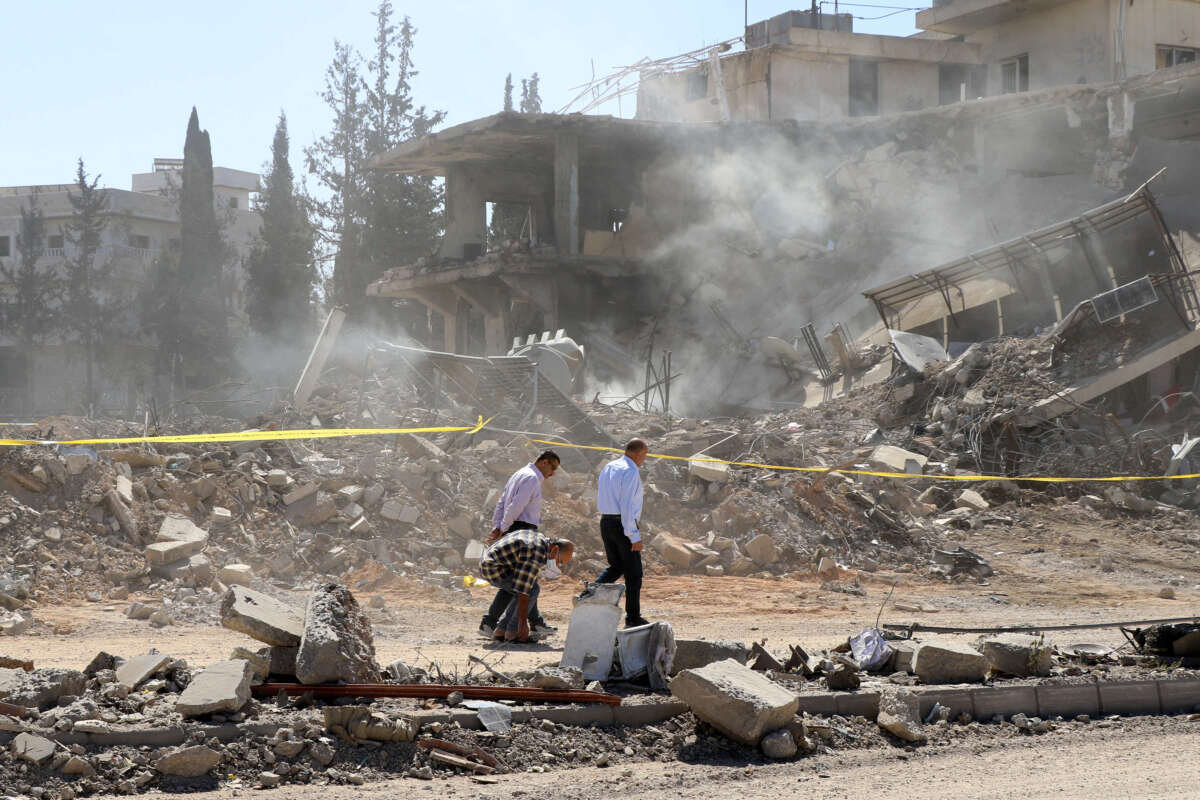Israel deliberately bombs historical sites in Lebanon

BEIRUT- Targeting ancient archaeological sites is a flagrant violation of international conventions that ban attacks on historical sites in times of war.
Archaeological sites in Lebanon have always been targeted by the colonial Zionist entity but the raids this time are more severe.
It has deliberately targeted religious sites, including mosques, churches, historical houses, government buildings, the ancient Nabatieh market and surrounding houses. This is in addition to the bombing of the Nabatieh municipality building with its ancient architecture.
The goal of this strategy – especially in the border areas is to create a 3-kilometer-long buffer zone completely devoid of any construction or farms under the pretext of protecting the northern colonial settlements from any potential attacks in the future, similar to what happened on October 7, 2023.
This pattern has also been adopted in Gaza since the onset of its war on the Strip under the pretext that these sites are being used for military operations by Palestinian fighters.
The Israeli aggression is not limited to targeting historical sites. It has extended to destroying the basic infrastructure projects primarily intended to prevent the residents from returning to their villages. Nevertheless, this hostile measure will fail because the southern Lebanese people are determined to rebuild these structures after the war, even if they temporarily live in a tent.
After the liberation of South Lebanon in 2000, Hezbollah provided the opportunity for the citizens to return to their villages and rebuild their houses near the border strip. In the 2006 war, the occupation regime adopted the same dirty tactics, but they failed to decide the fate of the battle.
Obviously, Israel seeks to create a rift between the people and Hezbollah by accusing the latter of causing the destruction. However, it will not achieve its goal.
Strong tremors resulting from the systematic bombardments near historical sites threaten structures. An example of this is the archaeological landmark Duris Dome at the entrance to the city of Baalbek; the surroundings of Baalbek Castle and the ruins of Tyre (both are on the UNESCO World Heritage List); and Mays and Tebnine castles in the Nabatieh District.
Religious archaeological sites that have been directly targeted are Dardghaya Church; Prophet Shuaib Mosque in the town of Blida in the Marjeyoun District; Shebaa Mosque; Tayr Dibba Mosque; Kfar Tibnit Mosque; Yaroun Mosque; Al-Dhuhra Mosque; Al-Thaqalayn Mosque in Majdal Salm; Blida Mosque; and Prophet Benjamin’s Shrine in the town of Muhaibib that in 1948 the Zionists stole a rock from it with Hebrew inscriptions.
At the beginning of the aggression, the Israeli regime was under the illusion that sudden and harsh strikes would be enough to break Hezbollah’s back and weaken it. Therefore, it is trying to take revenge on Hezbollah’s entire popular base.
In any case, the failure of the occupation regime to capture the border villages after destroying them – thanks to the heroism of Hezbollah fighters – raises questions about the usefulness of these hysterical demolitions.
These measures fall within the framework of psychological warfare after the failure of the aggressor regime to eliminate Hezbollah or destroy its missile capabilities, as the resistance proves its ability to inflict devastating losses on the enemy.
Though Israel is destroying their homes, these people are still steadfast, firmly believing that victory will be theirs, which means that the psychological war to deceive the public has failed.
Leave a Comment